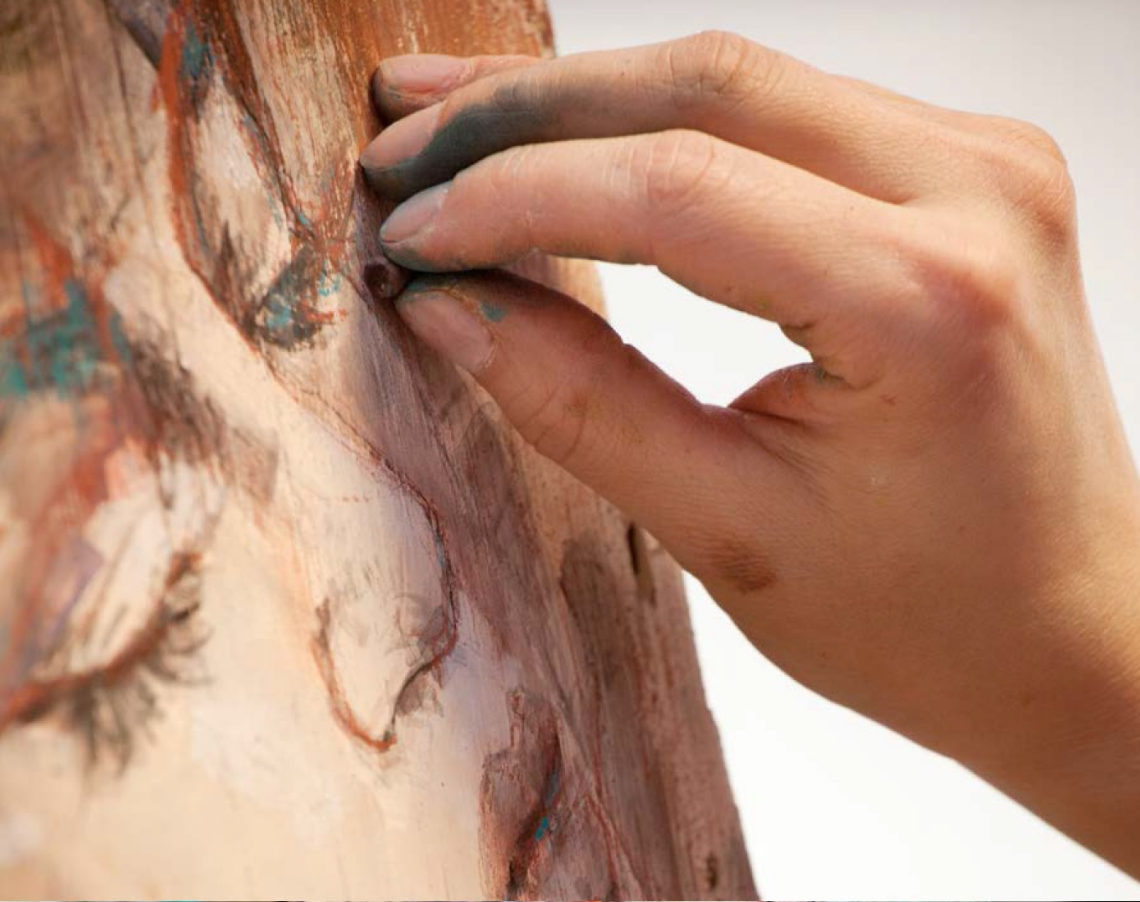
Painted Diares
Opublikowano: 11 listopada 2015
About inspiration, psychotherapy through art and realization of passion, Arkadusz Michlewicz has talked to Sylwia Kalinowska.
AM: You are a young artist, yet you have moved crowds with your paintings. Did you expect such a positive response?
SK: Publicity never crossed my mind, nor did the fact I would become recognised. Art is primarily about creating your own style, your personal brand, and being recognised within the community. I am doing what I love, and I never expected so many people would be interested in my work.
AM: When did you discover you had a talent?
SK: As a kid, I used to walk around with a pencil and a piece of paper, and I would spend my time sketching. At that time, I still wasn’t aware of my passion. I did it subconsciously. The same as people do ordinary everyday things, for example, tasting their food or watching television – I had a piece of paper, a pencil, and I drew. Eventually, it started to come out more, and painting became my job.
AM: Where do you look for inspiration?
SK: My own experiences and emotions are what inspires me. I paint, and if I feel that my creative vein runs dry, I put everything aside and try to escape to a wonderful place which will give me inspiration and awaken my senses. Paris is like that for me. I go there quite a lot. However, my most recent inspirations come from audiobooks. I listen to them, and I paint.
AM: Do you like to lock yourself in your own world?
SK: I think that’s something all artists do, just like musicians or dancers who spend their time in solitude, constructing their own movements. You fix your mind on what you are doing and what you want to achieve. I hear various opinions about myself; people often say I’m in some sort of a „trance”. I can’t control it though (laughs). I have, however, started to work on it, when I’m driving a car, for example. But it’s a fact that the full extent of one’s imagination, the whole „fairy tale”, takes place once you’re able to let go of your surroundings and escape reality. That’s when the work becomes personal. And this is not something you can simply learn from a textbook. Once you truly give in to your work, you succumb to your own trance naturally. If I don’t want distractions, I simply turn off my phone and carry on working (laughs). Otherwise I cannot fully immerse myself in my train of thoughts. One incorrect smudge or line is enough to ruin an entire artistic composition. You don’t know what to put your hands on first – maybe the highlights and lowlights which now appear completely different than they did? The baseline is being able to focus within that creative zone – that’s when things become easier. When everything is under control, you know what to get your hands on first.
AM: Is painting relaxing for your mind?
SK: It de-stresses me. In fact, it’s like psychotherapy to me. (laughs)
AM: Your paintings aren’t just landscapes, but also female faces. What is your preferred painting surface? Panel? Canvas?
SK: I enjoy painting on wooden panels, but I also don’t like to limit myself. I like faces and painting them is a relaxing activity. So I will say again, people and emotions are my main inspiration. That is, people who I meet wherever I go. The important thing then is whether it sparks an idea. My paintings have an internal meaning. You could treat them like diaries. Painting landscapes relaxes me. I become immersed in nature and that is also my way of breathing. I don’t want to fixate on one thing, because it really isn’t about painting a stereotypical portrait. Some say that beauty which doesn’t show ugliness is often stereotypical, but I don’t agree with that. I enjoy surrounding myself with pretty things. That is also how I paint. I don’t like the ugly.
AM: Where would you place yourself on the map of artists?
SK: I’m seen as one of those young artists with old school values. My work is slightly different from classical art. Although my paintings are quite traditional, I love a thick layer of paint on a piece. It’s more like sculpting in paint, rather than just painting. I apply it in layers and then remove the desired parts, which creates a texture.
AM: As we can see, it has its own character!
SK: Thank you. The works you are looking at are actually still unfinished. Right now their colours are quite vibrant, but later I will tone them down and start etching. To achieve the correct effect, every single layer must be dry before the next one is applied. I stop painting only when I feel that the look is complete. I can’t just create something from beginning to end in one go.
AM: I noticed that your Facebook profile often features different interior arrangements, into which you put your own paintings.
SK: My clients often struggle to picture how a panel could‚inhabit the inside of their own home. Through these arrangements, I try to awaken their imagination. They don’t know which painting they want. Once they can visualise how it could look in their home, making a decision becomes much easier. I have to admit that I’am pleasantly surprised with the Facebook effect, thanks to which people become positively‚infected by artwork. I know that as I enjoy looking at other people’s work myself. I’ve become fascinated with a certain photographer, for example. It’s a very addictive activity. Facebook is powerful because we’re exposed to „looking” at something on a daily basis.
AM: You get inspired by your own emotions and life experiences. People also respond to your work in an emotional way.
SK: I’m very glad to hear they respond to it that way, rather than just treating the work as something to hang up on the wall to look at. People write to me, they want to have my paintings, buy them from me directly, because they „feel” my work, and that gives me energy.
Tagi: art, beauty, culture, malowanie na drewnie, młody artysta, painting, painting on wood, piękno, portrait, portret, young artist
Udostępnij ten post:
-
Super – Sylwia Kalinowska


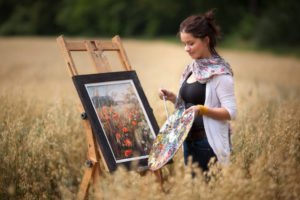

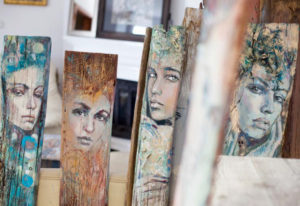
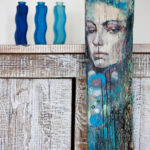
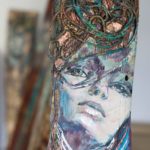



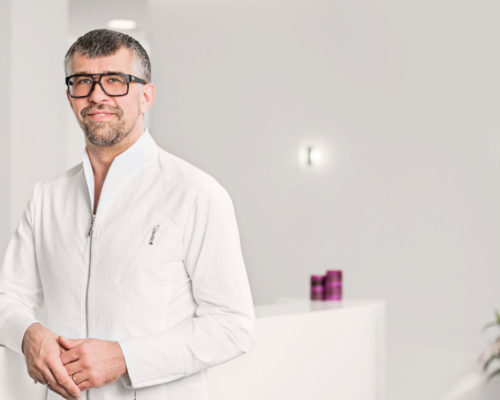
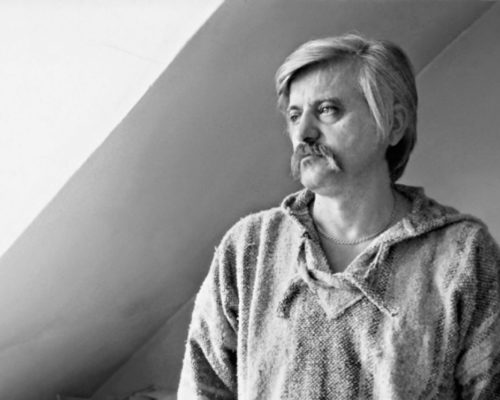


Dodaj komentarz